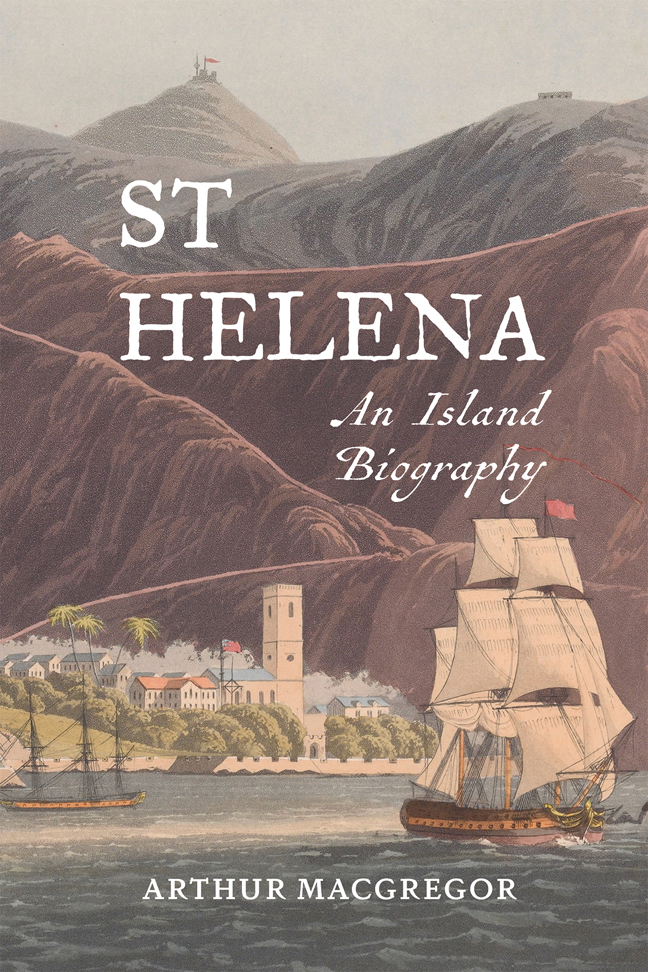Book contents
- Frontmatter
- Contents
- List of Illustrations
- Photo credits
- Preface
- Acknowledgements
- 1 Genesis
- 2 The breach: Europe and St Helena collide
- 3 Population and environment: early impacts
- 4 Population and environment: asserting control
- 5 ‘The citadel of the South Atlantic’
- 6 Scientists in transit: St Helena as a site for scientific investigation
- 7 Napoleon on St Helena
- 8 Later detainees, 1800s and 1900s
- 9 A place in the modern world
- Appendix: Governors of St Helena
- Bibliography
- Index
3 - Population and environment: early impacts
Published online by Cambridge University Press: 21 February 2024
- Frontmatter
- Contents
- List of Illustrations
- Photo credits
- Preface
- Acknowledgements
- 1 Genesis
- 2 The breach: Europe and St Helena collide
- 3 Population and environment: early impacts
- 4 Population and environment: asserting control
- 5 ‘The citadel of the South Atlantic’
- 6 Scientists in transit: St Helena as a site for scientific investigation
- 7 Napoleon on St Helena
- 8 Later detainees, 1800s and 1900s
- 9 A place in the modern world
- Appendix: Governors of St Helena
- Bibliography
- Index
Summary
The earliest descriptions of the island, compiled by mariners for whom it represented (often quite literally) a salvation, tend to open with an impression of its forbidding appearance from the sea followed by a progress up the well-watered Chapel Valley and the unfolding of the upland landscape into greenery. Peter Mundy, for example, observed in 1634 that:
The Island is verie pleasant to see to, alofte in some places faire woods of small Trees with straight stemms and broad bushey Topps, and in other places of other sorts; fine round, smooth hills with excellent grasse; many thicketts of Ferne, etts. runninge water in the bottomes [of the vallies] etts. and groves of trees …
By Mundy's day, however, the face of the island had already undergone far-reaching changes, directly or indirectly, at the hands of transitory seamen. Timber was a major requirement of the ships that touched there, many of which found themselves in immediate need of repairs – sometimes on a major scale – in order to complete the long voyage home from the East Indies. Native redwood in particular, once widespread on the island, was sought out by ships’ carpenters desperate for materials to see them through the remainder of the voyage to England.
With the permanent settlement of the island in the mid-seventeenth century (Chapter 4), consumption of timber for construction increased markedly and pressure on the forests rose in line with the growing demand for firewood. Domestic heating and cooking accounted for an increasing demand, but other factors are also singled out as having been particularly destructive. Yams, introduced particularly to feed the enslaved population (see below), required prolonged boiling over several hours to make them at all palatable, while the distillation of arak, to which large numbers of the white planters quickly became addicted, also consumed significant quantities of timber. With the passage of time, so much of the immediately available timber had been cleared that those gathering firewood (again slaves in particular) were having to walk for several hours into the interior to find new sources.
While there is no documented instance of deliberate clearance of woodland to make way for agriculture, one pernicious factor ensured that once trees had been felled the woodland would be lost forever – namely, the presence of numerous feral goats and other ruminants.
- Type
- Chapter
- Information
- St HelenaAn Island Biography, pp. 17 - 29Publisher: Boydell & BrewerPrint publication year: 2024

